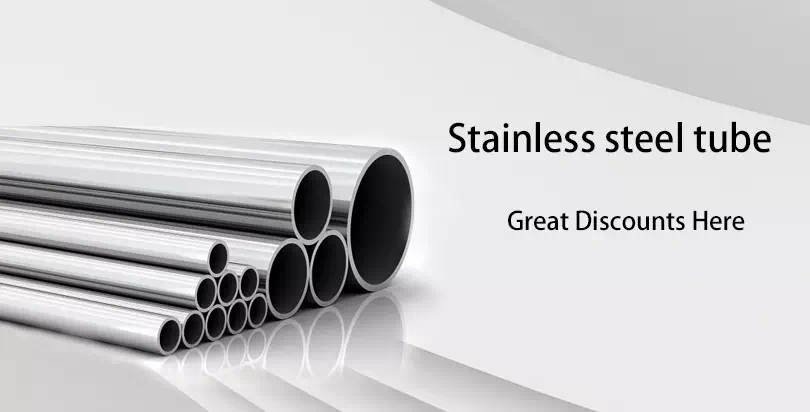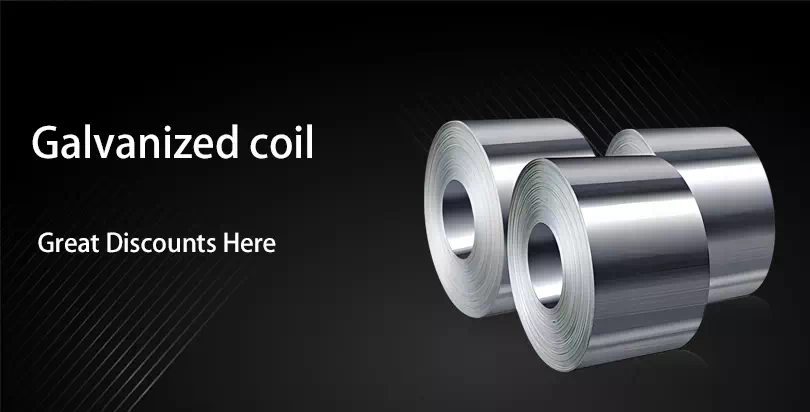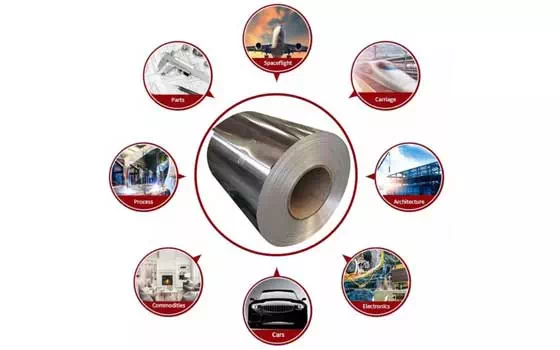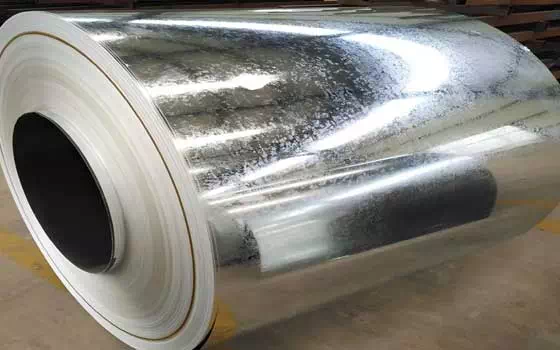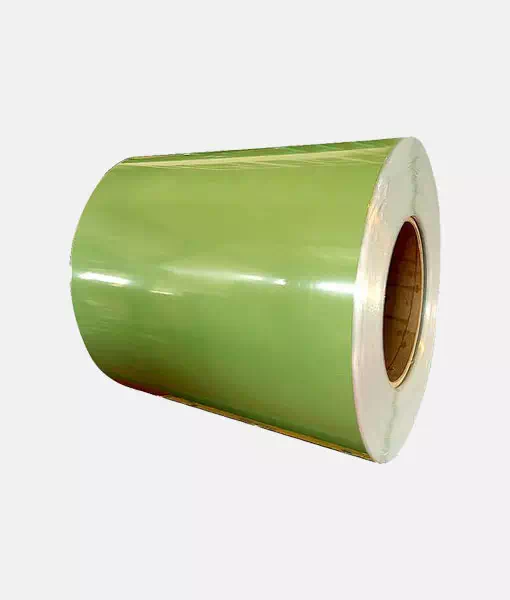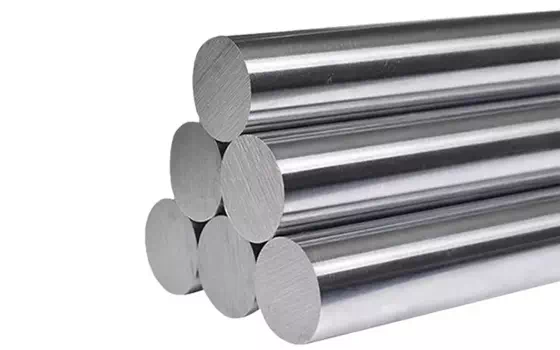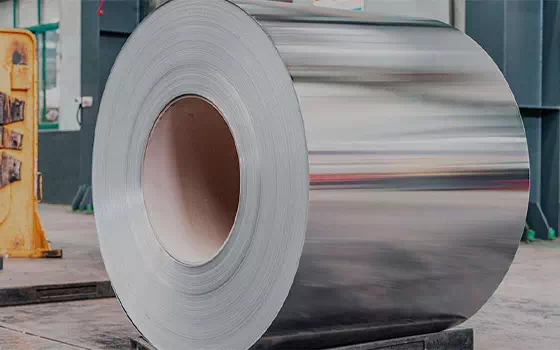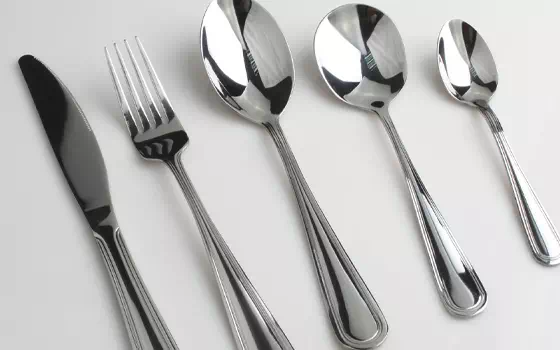Because of its excellent corrosion resistance and good cost performance, hot galvanized sheet coil has gradually become the mainstream variety in the application of steel sheet coil. At the same time, because of the characteristics of hot galvanized sheet coil product itself, it can be used directly or subsequent coating. Complex application scenarios and personalized requirements of different applications also make users pay more attention to the surface quality of hot-galvanized sheet coil.
Understanding the quality defects and countermeasures of hot-galvanized coil products is helpful for us to better communicate with users and improve the quality of trade.
Peeling of a zinc layer (attached oxide)
Shape: galvanized layer is easy to peel (large or small block) peeling sheet under the surface of the substrate oxidation phenomenon, black, blue or black and blue mixed, generally not peeling before the coating will first form a pinhole and the coating surface shape will also appear visual abnormalities (zinc flower three-dimensional prominent, the surface is particularly bright... Etc.); When the production line is temporarily shut down for some reason, if the non-oxidation furnace atmosphere control is poor and the steel surface is formed by peeling rust, when this part passes through the zinc tank, it is blown off by the air knife and forms bare black spots. In addition to emerging from the surface of the zinc tank, some parts of the blown rust may be suspended in the zinc bath, which often takes a long time to bring it all out.
Cause: can be divided into furnace zone and non - furnace zone factors
Furnace area factors:
- Incorrect air/gas combustion ratio and flow control lead to improper CO and O2 content in the furnace atmosphere
- Furnace temperature is too low or improper match with plate temperature, plate temperature is too low
- The dew point is too high, i.e. the water content (H2O) is too high
- The abrupt change of plate temperature causes the furnace temperature to change too much, which is related to the thickness, roughness, surface state of the substrate... Etc. related
Non-furnace zone factors:
- Poor cleaning
- The water quality of the wash section is not good
Countermeasures:
a) Prevent gas leakage in the furnace area
b) Prevent leakage of cooling water systems in the furnace area
c) Careful and appropriate control of non-oxidizing furnace atmosphere CO% : 3-5 %; Furnace temperature > 1200 ℃
d) Proper control of alkali washing conditions: free alkali, alkali ratio, alkali washing temperature
e) Open the bypass soft and pure water manual valve when the water quality is not good
f) When H2 reacts poorly with steel plate, the temperature of the plate can be increased to promote the reduction rate or decrease the rate to increase the reaction time
Zinc stripping (surface carbon)
Morphology: coating is easy to peel off, the surface is accompanied by black powder, substrate sometimes there will be bluing phenomenon, black powder may be oxide, may also be carbon (C) powder, so it is necessary to do experiments or experience to observe and judge (most appear in the head and end).
Cause:
- Improper air control in furnace area (CO % is too high)
Countermeasures:
a) Properly control the atmosphere in the furnace area: CO % : 2 -- 3 %
Excessive accumulation of three zinc slag on the surface
Morphology: One is massive (slag of oxidized flake); The other is granular (intermetallic compounds) which can be divided into two types - top scum and bottom scum. These slag will cause the surface of the steel plate rough (distributed in the steel plate overall or on both sides of the edge), serious, easy to form warped edge after winding.
Cause:
- The temperature change of zinc tank is too large, especially when the zinc ingot is immersed too fast, it is easy to cause the temperature change around it
If the content of -AL is too high, it is easy to form the bottom slag if the content of Al is too low, so the content of Al should be controlled at 0.18-0.22 %
- Oxide stripping due to shutdown defect or other factors
- Surface defects of substrate are easy to cause adhesion of zinc slag
Countermeasures:
a) Keep the temperature of zinc pool stable as far as possible. (Because Fe and Al are easy to dissolve in large quantities at high temperature, but easy to precipitate out at low temperature, resulting in zinc slag)
b) When adding large zinc ingot, it should be immersed in zinc bath slowly
c) The scum on the surface of zinc bath can not be removed too often, just put it to the side, and remove it every other period of time (such as 1 hour)
d) When adding small zinc ingot, the input should not be concentrated in one place and should be evenly distributed
e) Remove the oxide rust from the zinc pond as far as possible to prevent sinking to the bottom or suspending in the zinc bath
f) Properly adjust the air knife and its pressure and Angle
Size change of zinc flower in four coatings
Morphology: Large and small patterns can be seen on the surface of the coating, sometimes prominent, sometimes flat, sometimes very bright, sometimes gray (fuzzy)
Cause:
- is related to the temperature of the steel plate
- Poor substrate material [Si, P content is too high - reference strategy a)]
- Related to the Pb content of zinc pool
- There is a trace of debris on the surface of the original plate
- Zinc pool Al % is too low resulting in too thick coating alloy layer and no shining alumina (Al2O3) exists on the surface
- Sb % Improper control
Note: Adding antimony (Sb) can increase the brightness of the surface coating
Countermeasures:
a) Pay attention to Si and P content when purchasing raw materials
Si: 0.04 -- 1.2 % and ≧ 0.30 %
(Si + 2.5 × P) ≧ 0.35% should be avoided to prevent the alloy layer is too thick and gray surface coating
b) Zinc pool Pb % should be controlled within 0.09 -- 0.13 %.
If < 0.09% zinc flower is not easy to produce; > 0.20% easy to produce "black" and "white rust"
c) Appropriately increase the temperature of zinc pool to increase the solidification time to promote the growth of zinc flowers
d) Sundries on the surface of the steel plate should be cleaned in the entering furnace area
e) Increasing Al content (0.18-0.24%)
f) Control Sb % < 0.04 %, greater than 0.05 % easy to produce caterpillar-like "spike zinc flower"
Five base plate sandwich/warping
Shape: not easy to identify with the naked eye (only serious chip, can see from the surface of the strip surface protruding), most of the high double-sided protruding
Cause: The original defects of the plate come from the stage of casting steel
Countermeasures:
a) Pay more attention when buying ingredients
Hexagonal luminance
Form: different plate reflectivity, sample comparison can see obvious color difference.
Cause:
a) It is related to the surface roughness of the plate
b) Influence of different size of zinc flower
c) insufficient Al content (because Al2O3 will make the surface bright)
The brightness difference between the seven surfaces
Form: Different reflection light on both sides of the panel
Cause: Ibid
Octagonal/massive zinc slag mark
Shape: The surface of the board can be seen to be composed of small particles in line or in small clumps distributed on the surface.
Cause:
- Scratches on the substrate make it easy for zinc slag to concentrate and adhere there
- The uneven roughness of the surface makes the zinc slag easy to adhere to the rough surface
- The zinc slag cannot be blown off due to a local air knife joint obstruction
Countermeasures:
a) Suitable for adjusting the height, pressure and distance between the air knife and the steel strip
b) When found, clean the air knife online immediately
Nine craters, black spots, concave spots
Shape: Black spot when viewed with the naked eye, crater can be seen when viewed with magnifying glass
Cause: The coating is easy to flake phenomenon, may be oxidation or carbon deposition
Countermeasure: co-attached oxide
Ten bubbles
Shape: Both sides of the steel plate have protrusion similar to the shape of the sandwich
Cause: The sandwich gas inside the steel plate rises by high temperature and makes the surface of the plate protrude
Countermeasure: same sandwich
Eleven highlights
Shape: The surface of the steel plate is dotted with bright spots, local or overall distribution
Cause: The equipment roller is attached with foreign particles, which scratches the surface of zinc layer by friction. Or flat roller adhesion to foreign bodies will also cause bright roller impressions.
Countermeasure: Try to find out the source of the roller to remove the attachment on it
Twelve-layer variation
Shape: The surface of the zinc flower is uneven lumpy area, uneven brightness, sometimes like starlight. When observed with a magnifying glass, the pinhole - like surface is sometimes found, and the zinc flower is protruding in a three-dimensional shape.
Cause:
- This phenomenon is most obvious when the coating is stopped and restarted. The reason is not completely clear only know that there is a layer barrier between the galvanized layer and the original plate (such as oxide, carbon... Most of the coating will peel off this phenomenon.
- Related to the original plate substrate, some may be in hot rolling forming temperature control during improper carbon precipitation surface, serious rolling into the rust skin... Etc.
- Uneven thickness of steel plate or uneven temperature distribution may also cause different size of zinc flowers.
Countermeasures:
a) Properly control the temperature, atmosphere, dew point, plate temperature in the furnace area... (Steel plate thickness and linear velocity should match)
b) Defects of raw materials shall be reported to the raw material manufacturer.
Chromic acid skin film contamination
Shape: Severe yellow attachment exists on the surface of steel plate or on both sides of steel coil.
Cause:
- Chromic acid concentration is too high
- The surface of the water extrusion roll is damaged and the excessive chromic acid cannot be removed. In essence, the chromic acid passivation film is coated unevenly, and the thicker part of the film layer appears yellow.
Countermeasures:
a) Control chromic acid concentrations within control standards
b) Replace the water squeezing roller; Both sides of the steel belt are equipped with blowing devices to clean the edge
14 No chromic acid coating
Shape: Lighter than normal color on steel strip surface (visual)
Cause:
- Nozzle blocking
- The working tank liquid level is too low, causing the process equipment to not start
Countermeasures:
- Check nozzle on site and clean it
Fifteen white rust
Shape: White powder can be seen on the surface of the steel plate
Cause: Zinc oxide compounds are produced by corrosion. SO3 and NaCl in the atmosphere have the greatest influence on zinc oxide compounds. It is also easily caused by water vapor in transportation process and storage place
Countermeasures:
a) Special attention should be paid to the transport process and storage, or appropriate cladding should be made
b) After applying chromic acid, it must be completely dried without residual water
Sixteen hot wrinkle
Shape: The surface of the local or the whole width direction of the uneven, thinning and elongated phenomenon
Cause:
- The plate temperature is too high
- The linear speed is too slow
- Original plate thickness variation is too large
Countermeasures:
a) The furnace temperature should not have too big sudden change
b) When replacing raw materials, the thickness should not be too different to avoid overheating of the steel plate
c) The linear velocity must not change too much
Seventeen edge
Shape: This phenomenon is most likely to occur in thin plate, coil will be warped on both sides of the steel coil, serious appearance like a horn
Cause:
- Steel plate edge damage or impact
- Excessive zinc slag attached on both sides of the steel plate width direction
Countermeasures:
a) Special care should be taken not to hit the steel coil when transporting and lifting it
b) Adjust the air knife properly or install Edge Buffer
Eighteen steel coil crease
Shape: The surface of the steel strip has transverse lines across the entire width direction
Cause: After high temperature treatment of steel plate, if it is not tempered, and applied to external forming, there will be this crease phenomenon, which is generally more common in steel strip after cooling tower steering roller
Countermeasures:
- Properly control the plate temperature of the steel strip passing through the cooling tower steering roller
- Properly control the tension between furnace area, zinc tank and cooling tower steering roller
- Steel strips are treated by tempering and lengthening or tension levelling machines
Nineteen disc roll crease
Shape: same as steel coil crease
Cause: winding tension is too large or raw material properties are not good
Countermeasures: The raw steel coil is rolled and stretched by conditioning and the tension of coil is reduced
Twenty less than/over plating
Morphology: Cannot be distinguished by visual observation, only by assay or X-ray thickness gauge
Cause: air knife distance, pressure... Etc.
Countermeasures: Adjust the conditions of the air knife
Twenty-one plating differences on both sides
Morphology: There may be different size and surface brightness on both sides of the zinc flower
Cause: The difference of surface roughness and cleanliness is the biggest reason, and sometimes the difference of coating thickness is too big
Action: Try to make the two sides equal in degree
The twenty-two bending test is not good
Shape: After 90° or 180° bending test, the surface of the galvanized layer peeling, sometimes comprehensive, some for block, strip, some for fine cracks
Cause: There is a layer of intermediates between the coating and the surface of the steel plate, which may be oxide, carbon... Sometimes, too low Al content will make the bending test worse after alloying.
Action: Same one, two
Twenty-three parking defects
Morphology: complex and diversified, with oxidation, spalling, carbon deposition, zinc flower convex obvious, pinhole coating... Etc.
Cause: From the cleaning section and furnace area
Action: Avoid downtime
Twenty-four gas knife marks
Morphology: Pale white stripe marks can be seen on the surface. Plate edge width about 1-3 cm light white specific coating
Cause:
- Air knife tip is blocked by solidified zinc
- Turbulence on both sides of the plate edge
Countermeasures:
a) On-line gas cleaning knife
b) Properly adjust the air knife or install the edge spoiler
Zinc Pool roll Mark (Silent roll mark)
Form: Intermittent striations, sometimes rough and sometimes clear. Zinc residue may be attached to them
Cause: Zinc pool roller attached particles or massive foreign bodies and steel plate after friction
Countermeasure: regular cleaning or replacement of roller
Twenty-six short line bright mark
Form: intermittent linear scratches, sometimes clear, sometimes dense, visible in light
Cause:
- The on-line rubber wheel is attached with iron filings
- A roller on the line does not rotate
Countermeasure: Find out the source roller to remove the foreign body on it


